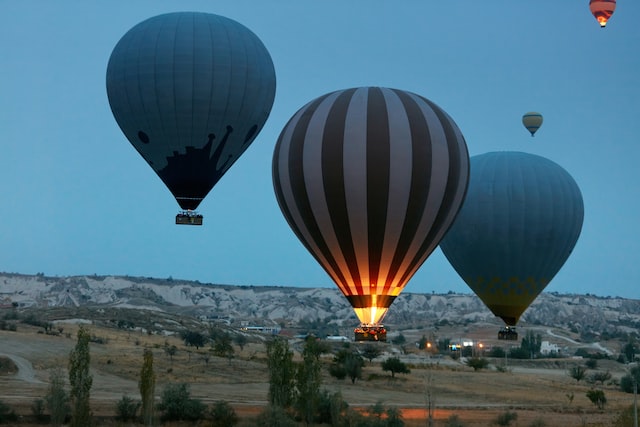When you want to learn how to steer a hot air balloon, you need to know a few basic things. You have to understand that a hot air balloon is very different from an airplane. While an airplane can be steered in any direction, a balloon can only be steered up or down. If you want to learn how to steer a balloon, you should also consider the types of winds and altitudes you will be flying in.

Image by Unsplash+
Hot air balloons work on the basic principle that hot air rises when cool air is nearby. They don’t have engines or propellers, but they do have burners that produce radiant heat, which is released when you open a blast valve. These burners are important because the hot air within the balloon creates a lift. The balloon’s weight can exceed the weight of a large automobile, so it’s important to keep it stable.
As you ascend, the wind direction changes. At higher altitudes, the direction turns to the right. Pilots must use this information to maneuver the balloon. However, the direction of the wind can be changed, so if you need to change your altitude, you’ll have to improvise your route. This can be done by following visual clues or using the wind direction information.
If you want to learn how to steer a hot air balloon, you’ll have to start by determining the altitude of the balloon. Once you’ve found the correct altitude, you can then determine the wind direction at that level. Some balloon pilots will use shaving cream to test the wind beneath the balloon. In addition to checking the wind direction, you’ll also want to pay close attention to tree branches, smoke, and any other signs of wind on the ground.
You can also watch the shaving cream fall to see how the wind direction changes. This is especially important if you’re landing. It may indicate that your balloon is going into an inversion, or that you’re going to have to climb to a higher altitude to change the direction of the wind.
For short flights, you might not need to wear binoculars. A magnetic compass is useful. But when you’re in a hot air balloon, you’ll need to look at a topographic map or an aviation map, both of which can be obtained from regional aviation administrations.

Image by Unsplash+
You can also use the Coriolis effect to help you steer. This happens when the sun is out on earth, which can cause constant change in the direction of the wind. You can also use the wind to rotate your basket. Use the green and black cable to turn the basket to the desired direction.
Using a burner or parachute valve, you can ascend or descend into different winds, which can provide directional control. You can also control the direction by allowing the air to cool and then burning.
Unless you have a lot of experience, you’ll need to practice to land. Even experienced balloon pilots are at risk when they land. The ground can be rough and unpredictable, and you could have trouble keeping your balloon from tipping over. To prevent this, experienced balloonists will tack, or move up and down, in their altitude to avoid crashing into the ground.
